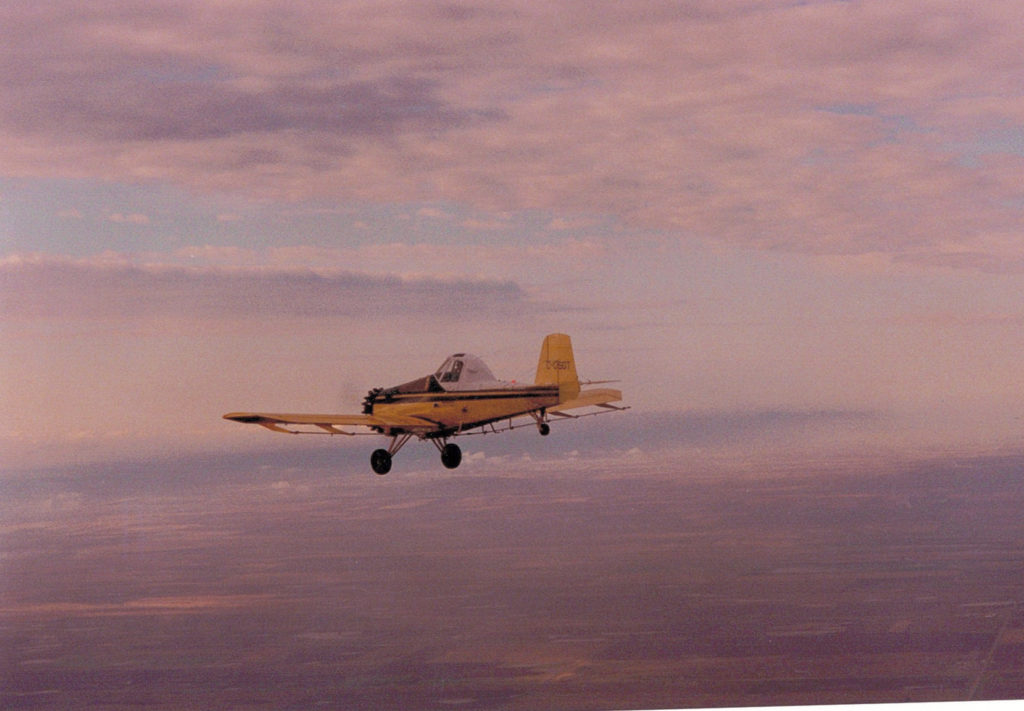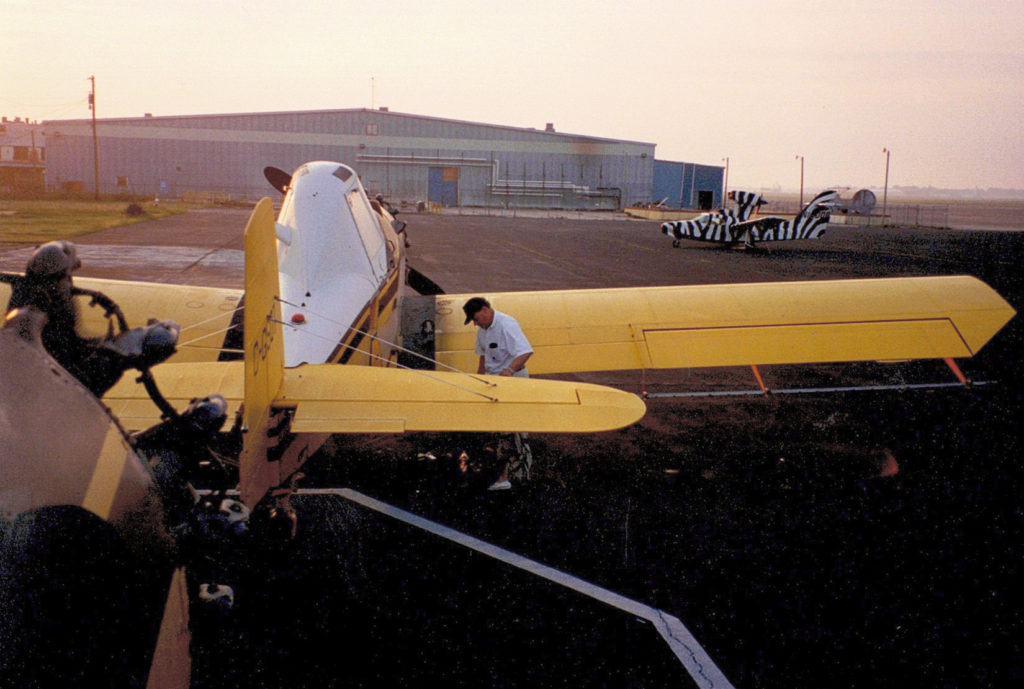Estimated reading time 9 minutes, 20 seconds.
Editor’s note: This is part 4 of a 5-part series by Ted Delanghe, where the former Air Force pilot recalls extraordinary memories and lessons learned from his time spent flying over 50 different aircraft types around the world. Click to read part 1, part 2, and part 3.
In his book Deep South, explorer and writer Paul Theroux said that when you travel, it is often the journey to the destination that defines the trip, with action and events along the way that overshadow the arrival. This was absolutely true for a trip I made in 2015 to deliver two Thrush Commander S2R crop dusters from Saskatchewan to Puerto Rico. I teamed up with good friend Norm Colhoun, who organized the sale of the two aircraft. Their eventual point of delivery was Guyana.
The Thrush aircraft has been characterized as a tractor with wings. They are workhorses — plain and simple — built strong in all quarters to withstand the daily punishment that agricultural aircraft must endure day after day. Both of these aircraft had been around the block — with dents, scrapes, and other signs of wear and tear to prove it — but both were still strong and ready for action. Powered by a 1,320-cubic-inch radial engine whose design dated back to the 1940s, they still could look forward to many more years of productive service.

It was late September, and fall had already taken rich harvests from the immensity of grain fields across the prairies. We began the journey at Norm’s airstrip near the small town of Lumsden, Saskatchewan, where bright and early we rolled both machines out of his huge Quonset hangar. It was a little past 7 a.m., and already the shadows were noticeably longer than during the summer months, as the sun raced southward towards fall equinox. Heavy, diamond dewdrops sat on the grass strip. The sky was cloudless, with a deep blue horizon that seemed etched on the landscape, foreshadowing excellent weather along the route.
I had spent the day prior preparing route maps, which in our current GPS navigation days, are a thing of the past. However, to those of us who were brought up in aviation where pristine, accurate maps were king, they provided a feeling of comfort and security where power failures would not be an issue.
Flying cross country in a single-seat aircraft harkens back to a bygone era where it was the single pilot versus the brooding temperament of capricious weather gods. Flying cross country in formation with two single seaters simply doubles the pleasure, particularly in the Thrush aircraft; a true stick-and-rudder machine, with no fancy electronic gadgets to take the fun out of flying.
Aside from refueling points in Aberdeen, South Dakota, and Omaha, Nebraska, the first major stop was in Hayti, Missouri, home of Mid-Continent Aircraft Corporation. It was here where we had the plumbing installed to be able to use and select the 400-gallon hoppers as additional fuel tanks. This was primarily for the last legs which were to be flown over water, with the longest leg being around 250 nautical miles.
We were entering tornado country, and en route we could clearly see the massive, seething thunderstorms that had just dumped a record amount of rain in St. Louis. So much so, that we could clearly see the blood-red setting sun reflecting off the mighty Mississippi over 50 miles away. It was a sight to behold, and weather to avoid.

It was along this leg that I sensed, rather than felt, that something was amiss with my radial engine. There were no indications on the tachometer, nor any of the instruments, but it didn’t seem right. I just couldn’t put my finger on anything suspicious. At any rate, I put it out of mind. That almost turned out to be a very big mistake. When your “spidey sense” is tingling, you should pay heed.
Next stop: Bainbridge, Georgia. Then off we went down the western side of the Florida panhandle. The weather had socked in a bit, and we were scud running just below a solid 900-foot cloud deck. Then came that darn “something isn’t right” feeling. And just around that time, the tach was now showing some oscillations, probably about 50 to 100 rpm — within limits, but definitely not right. Norm was ahead en route to Naples where we were to be outfitted with over-water kits, but a small runway caught my eye just starboard. Quickly bringing the throttle back and carving around, I put it down nice and easy.
But to my surprise, when I advanced the throttle to taxi power, the plane just didn’t want to move. So, I added a bit more, then a bit more, but by then there was quite a lot of shaking and shimmering going on. I crawled off the runway just in time to see Norm on short final. He quickly taxied up to where I had shut down.
I think he used the expression “Holy Moses!” when we walked around to view my engine. The counter weight shaft on one side of the prop unit had malfunctioned, and was slowly, but surely, moving that blade to a fine pitch, rather than the cruise setting I had set. It’s not a great idea to have two blades with different pitch settings, because the horrendous imbalance will sooner or later result in some really bad news.

It took a couple of days to have the local aviation maintenance technician resolve the problem. He, too, reinforced how lucky I had been to set the aircraft down, because he figured it was only a matter of hours before a major failure would have occurred.
The rest of the flight was anti-climactic, but it was spectacular flying over the dazzling emerald greens of the Caribbean; past the Bahamas and Cuba’s north shore; on to Turks and Caicos; over the hazy, ridgeback terrain of Haiti and the Dominican Republic; to the final stop of San Juan, Puerto Rico.
To this day, I still can’t really explain why I initially felt that something was amiss with the powerplant. Sometimes you have to put the mind on hold, and let the hands on the stick sense the health and well-being of your aircraft. It always pays big dividends, over and over again.









These are wonderful stories, Ted. Thanks for sharing your considerable experience.